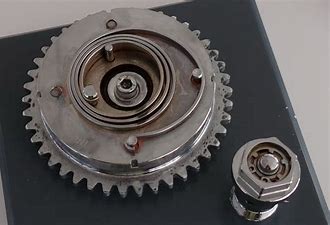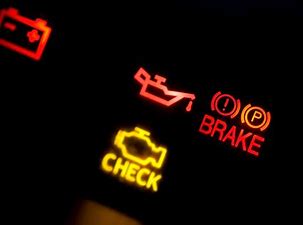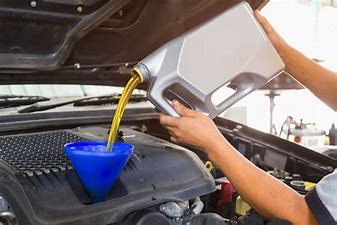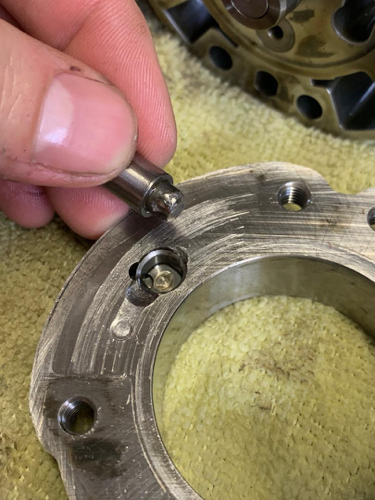How to Quiet Cam Phaser Noise
If you are the average car owner with limited knowledge of all the parts involved you probably know a few loose terms that relate to your vehicle. Batteries, alternators and cylinders are likely common terms but there are many other parts that the average owner will not know.
This is the case with the cam phaser which I can assure you has nothing to do with Star Trek. This part may pop up when you Google strange noises and you might want to find out more about it and how to fix it yourself if possible.
In this post we will hopefully help you find out just what a cam phaser is, what happens when one goes bad and what you can do to fix the situation.
What Is a Cam Phaser?
Cam phasers are sometimes referred to as camshaft actuators as well as other terms depending on the manufacturer. The name used really makes no difference however as they all do the same jobs. This job is to adjust the position or “phase” of the camshaft as it relates to the crankshaft. In simple terms it controls the timing of various engine valves.

You may well have heard of a crankshaft and may have an idea of what it does so we won’t go into that. What we will focus on is the camshafts of which there can be one or multiple used in relation to the crankshaft.
These cam phasers adjust the timing of valves that allow air into the engine and allow exhaust gases out of the engine. They may also control the flow of fuel into the engine in the case of port injected engines.
So as the crankshaft is rotating and connected to the connecting rods and pistons these camshaft actuators, or phasers if you prefer, are adjusting the timing for when valves open. This allows air to enter the engine where it meets the fuel and with the introduction of a spark from the spark plug creates ignition.
As we drive these ignitions or small explosions of air and fuel are what creates the power for our vehicles to move. The ignition occurs in the pistons which turn the crankshaft as they move. The crankshaft rotation is what turns our drive wheels creating our forward momentum.
The crankshaft is connected to the cam phasers by a timing belt. This belt helps to regulate the camshafts and ensures that the valves open at the right time to effect efficient combustion in the pistons. It’s a very well timed process that is going on continually as we drive down the road.
What Is the Noise When Cam Phasers Go Bad?
There are several indicators when a camshaft actuator or cam phaser goes bad but we will start with the noise aspect first as that is the topic of this article. When we are sitting at a light idling the cam phasers should be locked in place.
If the cam phasers are failing or have failed they may not be locked in place any longer so they will be moving around with the vibration of the engine. This can cause an audible rattling or knocking sound coming from the top end of the engine. This is most noticeable while idling and after the engine has reached full temperature.
Other Indicators of Bad Cam Phasers
The rattling sound may not always be an indication of bad cam phasers as there are many other components to an engine. We should therefore probably take a look at some other indicators that the cam phasers are damaged.
Check Engine Light
Most modern cars have a powertrain control module (PCM) which is essentially the vehicle's computer. This PCM draws in information from multiple sensors around the car, some of which are monitoring the positions of the cam phasers.

If the cam phasers have deviated from their expected positions then the PCM detects this and will turn on the check engine light. Additionally it will record an error code that can be accessed using the right equipment so you can be sure the camshafts are the issue.
Engine Performance Issues
If the check engine light was not a big enough indication of the problem then the effects of a bad cam phasers should be. Aside from the rattling when idling the now inefficient valve timing will result in rough running of the engine and sluggish acceleration.
If all three of these things are happening it may be time to check on the cam phasers.
How To Quiet Cam Phaser Noise
Finally we come to the question at hand, how do we deal with the cam phaser noise issue? Essentially there are two methods for this, one permanent and one more temporary. I will address both solutions even though one is more or less a way to delay the inevitable.
Oil Treatment Method
This is the temporary fix for the cam phaser noise issue and should only really be used in the early stages of hearing the rattling noise. Doing this when you have already received the check engine light and are suffering performance issues would be little more than a band aid on the problem.
You can decrease the cam phaser noise by using an oil treatment. This is a cheap stop gap fix which may buy you some time but ultimately you will have to go for the permanent repair option. If cash is tight right now though there is no harm in buying a little time but don’t push it too far as it can lead to other more serious engine issues.

It should be noted that this process is essentially changing your oil so if this is something you usually go to an oil place to do then this is what you should do. If however you want to try this yourself then read on and maybe going forward you can save money and do your own oil changes.
What do you Need?
The process of oil treatment is as follows:
- Safety gloves
- 14mm Ratchet wrench
- Oil collection pan
- New Oil Filter
- A suitable car jack
- Wheel blocks
The Process
- Before starting, ensure you know where the oil drain plug is located on your vehicle. This will be underneath the vehicle and usually closer to the front
- Use wheel blocks to block the rear tires. This will ensure the vehicle will not roll backward as you work under the vehicle
- Use a jack that is suitable for the weight of your vehicle as you will be raising the entire front end. As a general rule you need a jack that comfortably lifts 75% of the maximum gross weight of your entire vehicle. Safety can not be stressed enough here as you will be working under a very heavy piece of machinery
- Wearing your safety gloves use your ratchet wrench to remove the drain plug making sure that the oil collection pan is directly underneath ready to catch the flow of the oil. You do not need to cover your driveway with oil, that's not a good look
- It should take about 5 – 10 minutes for the oil to drain completely once it does replace the oil plug nut and attach a new oil filter (check your users manual for instructions for this)
- Lift the hood of your vehicle and locate the oil reservoir. Open this up and refill with the correct amount and type of oil for your specific vehicle. You will need a funnel to do this cleanly. Give the oil a few minutes to move through the engine and then test the level with the dipstick, top up if needed
- Clean up any spilled oil with a cloth before replacing the engine cap and shutting the hood
- Get into your vehicle and start it up. Allow it to idle and warm up for a few minutes. You will hopefully notice the noise has lessened
The reason this process works is that clean oil running through the engine makes everything run more smoothly. It will coat the camshafts in fresh oil so they start to move more smoothly. As mentioned however this is not a permanent fix it merely deals with the noise
Replacing the Cam Phasers
Now pushing the limits of your oil changes can play a big part in cam phasers wearing out more quickly so let me say at this point keep to your oil change milestones. If your camshafts have become damaged and need repair we will go through the process of doing so briefly below.

Process
- Take out the airbox and the air intake snorkel ensuring you also detach the harness
- Pull the dipstick tube detach the 8mm bolts and valve covers
- Rotate the crankshaft to the 12 o’clock position before removing the three rocker arms
- Pull the center rocker arm which is attached to the number one intake. You should also pull the two intakes for the number four cylinder
- Next pull the intake rocker arms for the number five cylinder and the exhaust on the number eight cylinder
- Unscrew the 15mm bolt which is located on the cam phaser
- Remove the cam sensor and rotate the crankshaft to the 6 o’clock position
- Place the timing chain wedge to hold it in place. Ensure you mark the chain so you can replace it correctly later
- Now unscrew the other cam phaser by removing the 15mm bolt on that one
- Remove the old worn cams and replace with new ones making sure they are correctly aligned.
- Reattach the timing chain and all of the other elements you have removed in the reverse order
This is just a loose outline as the process can be complicated and can vary depending on your vehicle. If you are set on making this repair yourself I suggest you find a video of the process for your specific vehicle.
It may be wiser if your mechanical skills are limited to take this problem to a professional as this is an important part of your engine. The timing process is vital to a smooth running engine so if in doubt get an expert's help.
Conclusion
If your cam phasers start making a noise this is something to address without too much delay. Their smooth operation is vital to maintain engine health and performance. There are quick fixes for the problem but they do not last long.
When cam phasers go bad there are no easy permanent solutions, you will have to replace them.
Link To or Reference This Page
We spend a lot of time collecting, cleaning, merging, and formatting the data that is shown on the site to be as useful to you as possible.
If you found the data or information on this page useful in your research, please use the tool below to properly cite or reference Tow Ratings as the source. We appreciate your support!
-
<a href="http://towratings.net/blog/how-to-quiet-cam-phaser-noise/">How to Quiet Cam Phaser Noise</a>
-
"How to Quiet Cam Phaser Noise". Tow Ratings. Accessed on April 27, 2024. http://towratings.net/blog/how-to-quiet-cam-phaser-noise/.
-
"How to Quiet Cam Phaser Noise". Tow Ratings, http://towratings.net/blog/how-to-quiet-cam-phaser-noise/. Accessed 27 April, 2024
-
How to Quiet Cam Phaser Noise. Tow Ratings. Retrieved from http://towratings.net/blog/how-to-quiet-cam-phaser-noise/.